Since NYSUT’s founding in 1972, the statewide union has been shaped, inspired and led by women from a range of professions: teachers, bus drivers, nurses, teaching assistants, professors, secretaries and more. Now with more than 575,000 members statewide, NYSUT has been a springboard for multiple generations of women leaders.
NYSUT would like to salute the pioneering efforts of these women:
Susan B. Anthony
'Join the union, girls'
As a teacher in New Rochelle and Canajoharie in the mid-1800s, Susan B. Anthony learned male teachers made several times the salary of female teachers. A member of the New York State Teachers Association (a NYSUT predecessor), Anthony called for better pay for female teachers and a role in the union’s annual convention and committees.
A unionist well known for her work to earn women the right to vote, Anthony also fought for workers’ rights, advocating the eight-hour work day. In The Revolution, a women’s suffrage newspaper in the 1860s, she said, “Join the union, girls, and together say, ‘equal pay for equal work.’”
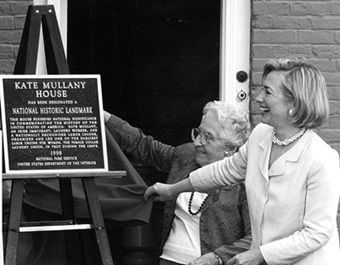
Josephine Sano and Hillary Clinton at the Kate Mullany house.
Sabina Brown
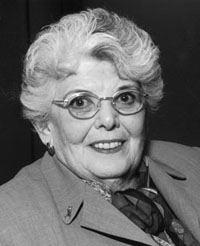
Issues of fairness
When Sabina Brown in 1956 was forced to take a two-year maternity leave from her Herricks elementary classroom, she was determined to change things. Brown taught in New York City for a year before moving to Long Island in 1953. Because of a district rule on pregnancy, Brown left. “When I came back in 1958, I got very active in the union,” she said. “The issues of salary were always there, but it was the issues of fairness that drove me.”
Brown steadily progressed in her local union, serving as president from 1970-77. Hot topics were class size, pay equity, and student testing requirements. It was a signal victory when teachers finally won a lunch period.
Since retiring in 1986, Brown, a member of the NYSUT Board, has worked on retiree issues and co-chairs the statewide union’s Retiree Advisory Council.
Jeannette DiLorenzo
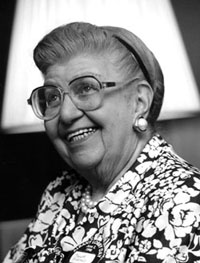
Social champion
A product of Manhattan’s Lower East Side, Jeannette DiLorenzo is used to fighting for social justice. “All the people around us were committed to the notions of trade unionism and socialism,” DiLorenzo told the UFT Oral History project in 1986. A social studies teacher, DiLorenzo was a member of the Teachers’ Guild before the UFT was formed in 1960. After working through the union ranks, DiLorenzo was elected treasurer in 1972, a position she held until 1993 when she became chapter leader of the UFT Retired Teachers Chapter.
A former member of the NYSUT Board of Directors, DiLorenzo has been a delegate to NYSUT, AFT and AFL-CIO conventions. Through her involvement with the retired teachers chapter, she has worked to safeguard health benefits and protect Social Security.
Nuala Drescher
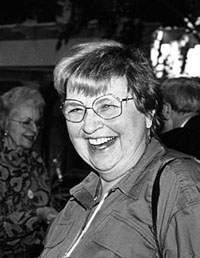
UUP crusader
When teachers and public employees won the right to organize and bargain collectively in 1967, Nuala Drescher was president of the Buffalo State chapter of the American Association of University Professors. Drescher helped the local organize with the AFT, believing that “if we were going to get pay raises or control over our professional lives, we were going to have to get into collective bargaining.”
Drescher, an American history and labor history professor, served as a delegate and Buffalo State chapter president when United University Professions was formed through the merger of the two associations representing State University of New York faculty. In 1981, Drescher was elected the first female president of UUP, where she worked to protect members’ academic freedom and increase political support for higher education funding. “The union played a very significant role in educating the public and the legislators to how important public education is,” Drescher said.
Ruth Dworkin
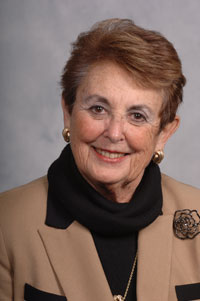
Yonkers leader
Against the advice of her mentor, former substitute Ruth Dworkin joined the Yonkers Federation of Teachers after being hired in 1962. When the union won a representational election against associations composed mainly of administrators in 1965, Dworkin became a building rep and two years later was elected Yonkers FT elementary vice president, a position she held until 1989.
As a full-time staff director for the federation, Dworkin was the point person for a $6 million arbitration when the district laid off 400 people in 1976 to close a budget gap. While serving on the union’s negotiations team, Dworkin helped the union resolve four strikes between 1972 and 1998, the longest lasting 14 days. After retiring in 1989, Dworkin remained active in the local and still serves as assistant grievance chairperson. As first vice president of Retiree Council 15-16, her latest focus is on retiree issues.
Anne Goldman
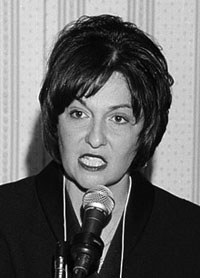
Nurse leader
In 1978, the American Federation of Nurses and Health Professionals, a NYSUT/AFT umbrella group, was formed to bring better representation to health care workers. An early pioneer in that effort was Anne Goldman from the UFT/FNHP.
At a time when nurses could be told to scrub floors instead of caring for patients, Goldman, a registered nurse at Lutheran Medical Center in Brooklyn, led the search for a union to meet the nurses’ needs. Goldman chose the teachers union for the strong bargaining and structure that allowed the nurses to maintain their autonomy.
In 1979, after long and often tense hearings with the National Labor Relations Board and hospital management, the nurses voted overwhelmingly for the UFT/FNHP in a representational election. “It was a horrible time, and when we look back we all say, ‘Where did we get the nerve to do this?’” Goldman said.
Jean Gordon
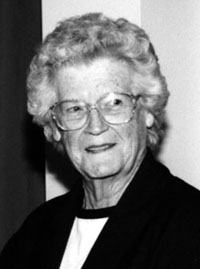
Half a century of service
Jean Gordon has been a leader in the teachers union movement since joining the Schenectady Federation of Teachers in 1949. She has seen the union grow from a social organization to a political force that won pension improvements in a 10-year battle.
From 1956 to 1992, Gordon held office in the Schenectady FT. In 1956 she was also elected secretary of a predecessor statewide union (the Empire State Federation of Teachers and later the New York State Teachers Association), a position she held until 1970. As Schenectady FT treasurer in 1975, Gordon had to run the union when the other officers were arrested after a 14-day strike. “In those days you didn’t have the Triborough Agreement (that continues contract provisions until a new one is negotiated) ... you just lost your contract,” remembered Gordon. “No contract, no work was our policy.”
Since 1988, Gordon has coordinated retirees from the Schenectady FT to work the polls during local, state and national elections.
Velma Hill
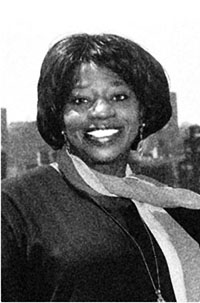
Para pioneer
Velma Hill was the first chairwoman of the UFT’s paraprofessional chapter from 1969-1979 and paved the way for many other paraprofessional leaders to come. An early challenge for paras and teachers was overcoming distrust, Hill said. With the help of Al Shanker, UFT president at the time, the relationships gradually improved.
In their first contract after joining the UFT, paras gained a career ladder program to earn free college tuition. Hill helped create the program which “enabled us to integrate into the teaching ranks,” Hill said.
After 10 years chairing the UFT’s para chapter, Hill worked with other notables in the civil rights and teacher union movement as director of human rights and international affairs for the Service Employees International Union in Washington, D.C. She is now a psychotherapist.
Alice Marsh
A New York City pioneer
Alice Marsh began teaching in New York City in 1929, when “the principal was a real matriarch, a tyrant.” She joined the union shortly afterward.
During her 35-year teaching career and even longer union career, Marsh represented three different unions: the Empire State Federation of Teachers, United Teachers of New York and finally the United Federation of Teachers. Marsh was a founding member of the UFT and served as the union’s legislative representative in Albany for 16 years. She worked to improve conditions for teachers and is credited with winning groundbreaking pension bills for the UFT.
Rosalie McLean
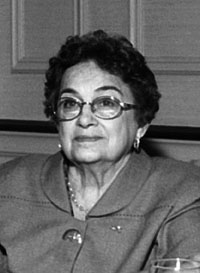
Retiree trailblazer
Though Rosalie McLean had been in the classroom off and on since 1947, she became a union activist in the 1970s when the Amherst district in Erie County started laying off school nurse/teachers, some near retirement. “The motivation was simply saving money,” McLean recalled. She and other teachers argued before the school board on the school nurse/teachers’ behalf.
The cavalier attitude about layoffs showed McLean the importance of the union. She became negotiations and grievance chairwoman, vice president and then president of the Amherst EA. One grievance from the ’70s was for a teacher fired because of his haircut.
A trailblazer on retiree issues and training, McLean was on NYSUT’s Retiree Organizing Committee, running “ready or not” pre-retirement planning workshops for NYSUT and the AFT.
Mary Muldoon
Combating poverty
In 1921, the New York State Teachers’ Retirement System was established after a successful legislative campaign by the state Teachers Association. Annual pensions for retired teachers with 35 years in the classroom ranged from $400 to $800. Many teachers could not meet the qualifications for full pension benefits. To compensate, the union established the Welfare Fund in 1925, with Mary Muldoon, a teacher from Waverly, serving as the welfare committee’s first chair.
Muldoon was known for taking up collections on behalf of retired colleagues who were living in poverty. After her death, the fund was renamed the Mary Muldoon Fund.
Jeanette Pietrantoni
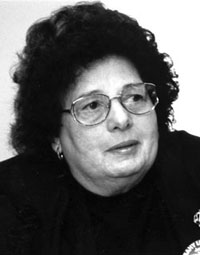
Leader and communicator
When Jeanette Pietrantoni returned to Syracuse in 1968 after serving in the Peace Corps, a lot had changed. The Taylor Law granting teachers the right to organize and bargain collectively had passed and teachers were forming their own unions separate from administrators. “That really jolted me, that so much had happened in the two years I was gone,” Pietrantoni said. A high school English teacher, Pietrantoni jumped back into the classroom and the union, writing a weekly newsletter.
Just a month after being elected Syracuse TA president in 1976, Pietrantoni was faced with division in the local over affiliation with two competing state organizations. Pietrantoni urged members to choose NYSUT for the services, training and resources the statewide union offered. “We lost a third of our membership, but they came back.” Pietrantoni later served on the NYSUT Board, as well as NYSUT’s Membership Services Committee, now known as the Benefit Trust, and computerized the AFT’s Defense Committee.
Maria Portalatin
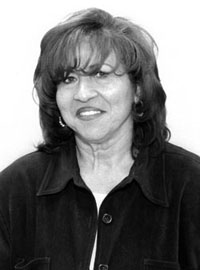
‘Yes, I can. Yes, I will.’
In 1967, Maria Portalatin was one of 100 New York City para-professionals citywide chosen to enter a career ladder program with tuition-free college courses. “No sooner were we getting used to the routine of going back to school than we were told funds no longer existed,” recalled Portalatin, chapter chairwoman for the UFT’s 20,000 paras and a member of the NYSUT Board and an AFT vice president. A single parent making $1.25 an hour, Portalatin couldn’t afford to pay for college. District Council 37, her union at the time, said there was nothing it could do.
Portalatin and other paras started an organizing campaign to join the UFT. In their first UFT contract, paras won significant salary increases and a career ladder program open to every para. “My motto is: Yes, I can. Yes, I will. We wanted to succeed and we’ve proven ourselves,” she said.
Josephine Sano
Live like a tiger
Josephine Sano started substitute teaching when married or pregnant women weren’t hired in Albany schools. She served as building representative, parliamentarian and secretary when the Albany local was affiliated with NYSTA, the NYSUT predecessor. Sano was an early advocate for substitute teachers and others looking for permanent positions. “There was no rhyme or reason to the way permanent appointments were given out,” Sano recalled. As president of the Albany Public School TA in the 1970s, Sano fought to have certified teachers hired as teachers and not aides, with the district finally agreeing to post vacancies.
Sano was a NYSUT delegate for many years and until 1996 a regional coordinator for VOTE-COPE, the union’s voluntary political action fund. In 1981, Sano was elected president of the Albany Central Labor Council, the first woman in the state to serve in that position. She retired in 2001. “I’ve always lived by Hubert Humphrey’s words: ‘It’s better to live one week as a tiger rather than 50 years as a chicken,’” she said.
Rebecca Simonson
‘One petal at a time’
As a leader of the Teachers’ Guild, a predecessor of the UFT in New York City, Rebecca Simonson compared organizing to “opening a flower one petal at a time.” Simonson knew that the union needed to build its strength — and membership — before considering a strike or any other major job action. In the 1940s, the Guild was only a minority organization. Simonson recognized that ill-planned action could be devastating to the union’s long-term growth.
Gloria Weinman
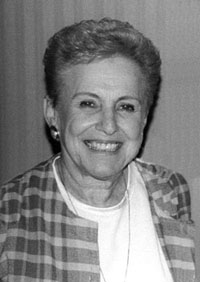
Don’t ‘shush’ me
In 1963, elementary teachers as a group couldn’t exactly be characterized as staunch unionists. But UFTer Gloria Weinman would work to change that. “On the first day of school at PS 155, I asked the teacher next door who to talk to about joining the union. I got this, ‘Shh, we don’t talk about union here.’” Weinman became the school’s chapter leader.
Between 1967 and 1975, the UFT would strike three times, the longest in 1968 when teachers walked out for 35 days to protect due-process rights. “The ’68 strike really built the union in the elementary schools,” Weinman said. Following that strike Weinman worked with a small group of teachers on a law to decentralize the city school system, and was later elected representative for Queens District 29 when few women held the position. Weinman retired in 1999 but still works part-time with the union.
Belle Zeller
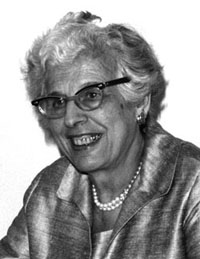
Higher ed activist at CUNY
An early advocate for higher education funding and professionals, Belle Zeller was the founding president of the Professional Staff Congress, the union representing City University of New York faculty, in 1972.
Zeller, a political science professor, had formerly headed the Legislative Conference, which merged with the United Federation of College Teachers to form the PSC. Zeller worked to achieve gains in salary and pensions. After retiring as president in 1976, Zeller became the PSC’s legislative representative, where she used her influence to convince the state to fund CUNY senior colleges. PSC annually awards a scholarship in Zeller’s name.